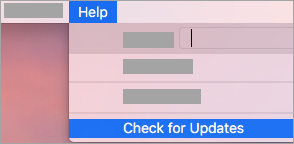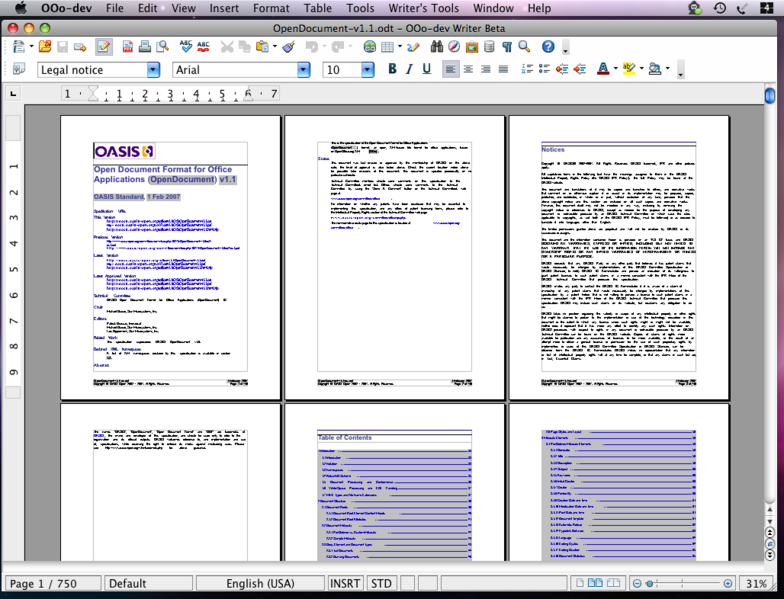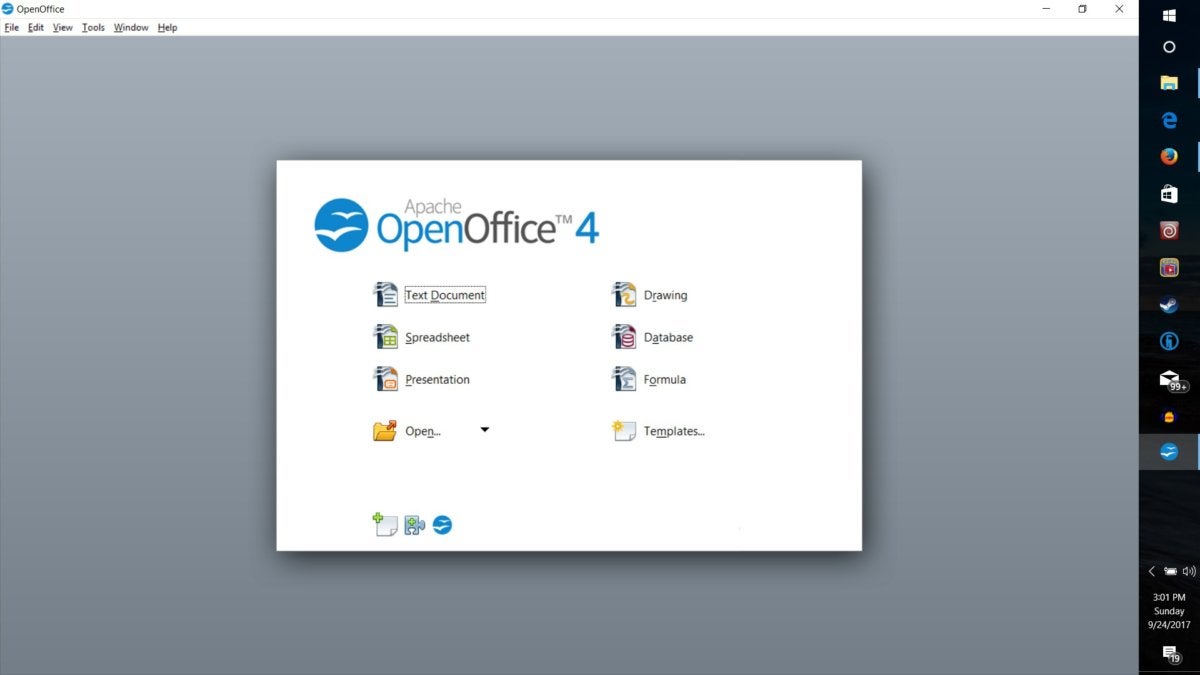

- #OPEN OFFICE FOR MAC REVIEW FOR FREE#
- #OPEN OFFICE FOR MAC REVIEW UPDATE#
- #OPEN OFFICE FOR MAC REVIEW SOFTWARE#
- #OPEN OFFICE FOR MAC REVIEW CODE#
This is because the two different licenses only allow a one-way transfer of code. On the other hand, LibreOffice has some features - like font embedding - that don’t appear in OpenOffice.

#OPEN OFFICE FOR MAC REVIEW CODE#
The practical result is LibreOffice can take OpenOffice’s code and incorporate it into LibreOffice - the licenses are compatible. The Apache OpenOffice project uses the Apache License, while the LibreOffice uses a dual LGPLv3 / MPL license.

OpenOffice’s sidebar code was copied and incorporated into LibreOffice. On the other hand, the experimental sidebar in LibreOffice looks basically identical to OpenOffice’s sidebar. The sidebar in OpenOffice is an entirely new feature the Apache OpenOffice project has added to OpenOffice. The sidebar above is an interesting example of where these projects are going. They’re both free and open-source, so you can always download both to compare - you probably won’t notice too much of a difference. The vast majority of people will have trouble noticing the difference between LibreOffice and OpenOffice. We could go on looking for more differences, but this really just feels like nitpicking. Embedding a font in a document ensures that document will look the same on any system, even if the computer doesn’t have the font installed. This can be activated from File > Properties, under the Font tab. LibreOffice also has support for font embedding in documents.
#OPEN OFFICE FOR MAC REVIEW UPDATE#
On OpenOffice, you still have to select Tools > Word Count to view the word count at any given time - it won’t update and show itself automatically. Look at LibreOffice’s status bar at the bottom of the window and you’ll see a live-updating word count for the current document. (To enable it, click Tools > Options, select LibreOffice > Advanced, check Enable Experimental Features, restart LibreOffice, and click View > Sidebar.) With the sidebar enabled, the two programs look almost identical. The sidebar can be enabled in LibreOffice, too. This sidebar is designed for widescreen displays where vertical space is at a premium. Aside from the different default theme, there’s an entire sidebar included in OpenOffice that LibreOffice doesn’t show by default. These programs definitely don’t look completely identical. Next, we have a screenshot of OpenOffice Writer. They have similar interfaces and features.īelow, we have a screenshot of LibreOffice Writer, LibreOffice’s word processing program. These two projects share the vast majority of their code. Both office suites include the same applications for word processing, spreadsheets, presentations, and databases.
#OPEN OFFICE FOR MAC REVIEW FOR FREE#
You can download LibreOffice or OpenOffice for free for Windows, Linux, or Mac. Apache released the beta version of OpenOffice 4.1 in March, 2014. LibreOffice has been developing more quickly and releasing new versions more frequently, but the Apache OpenOffice project isn’t dead. The project known as OpenOffice today is actually Apache OpenOffice and is being developed under Apache’s umbrella under the Apache license.
#OPEN OFFICE FOR MAC REVIEW SOFTWARE#
In 2011, Oracle gave the trademarks and code to the Apache Software Foundation. Most Linux distributions, including Ubuntu, switched their bundled office suite from to LibreOffice. LibreOffice was a fork of and is built on the original code base. Most outside volunteers - including the contributors to Go-oo, who contributed a set of enhancements used by many Linux distributions - left the project and formed LibreOffice. They renamed the proprietary StarOffice office suite to “Oracle Open Office,” as if they wanted to cause confusion, and then discontinued it. In 2011, Sun Microsystems was acquired by Oracle. The project continued with help from Sun employees and volunteers, offering the free office suite to everyone - including Linux users. In 2000, Sun open-sourced the StarOffice software - this free, open-source office suite was known as. Sun Microsystems acquired the StarOffice office suite in 1999. Understanding why there are two separate office suites built on the same code is only possible if you understand the history here. RELATED: What Is Open Source Software, and Why Does It Matter? Why Do OpenOffice and LibreOffice Both Exist?


 0 kommentar(er)
0 kommentar(er)
